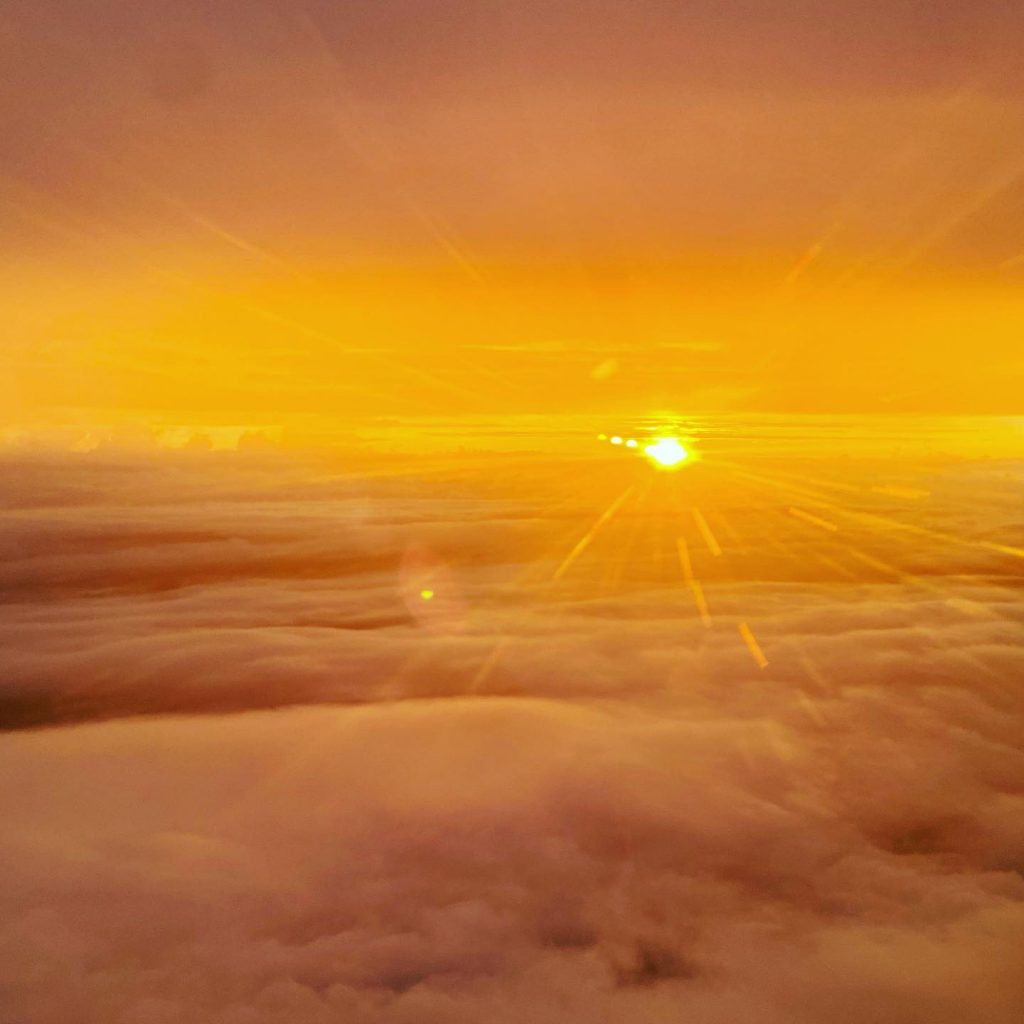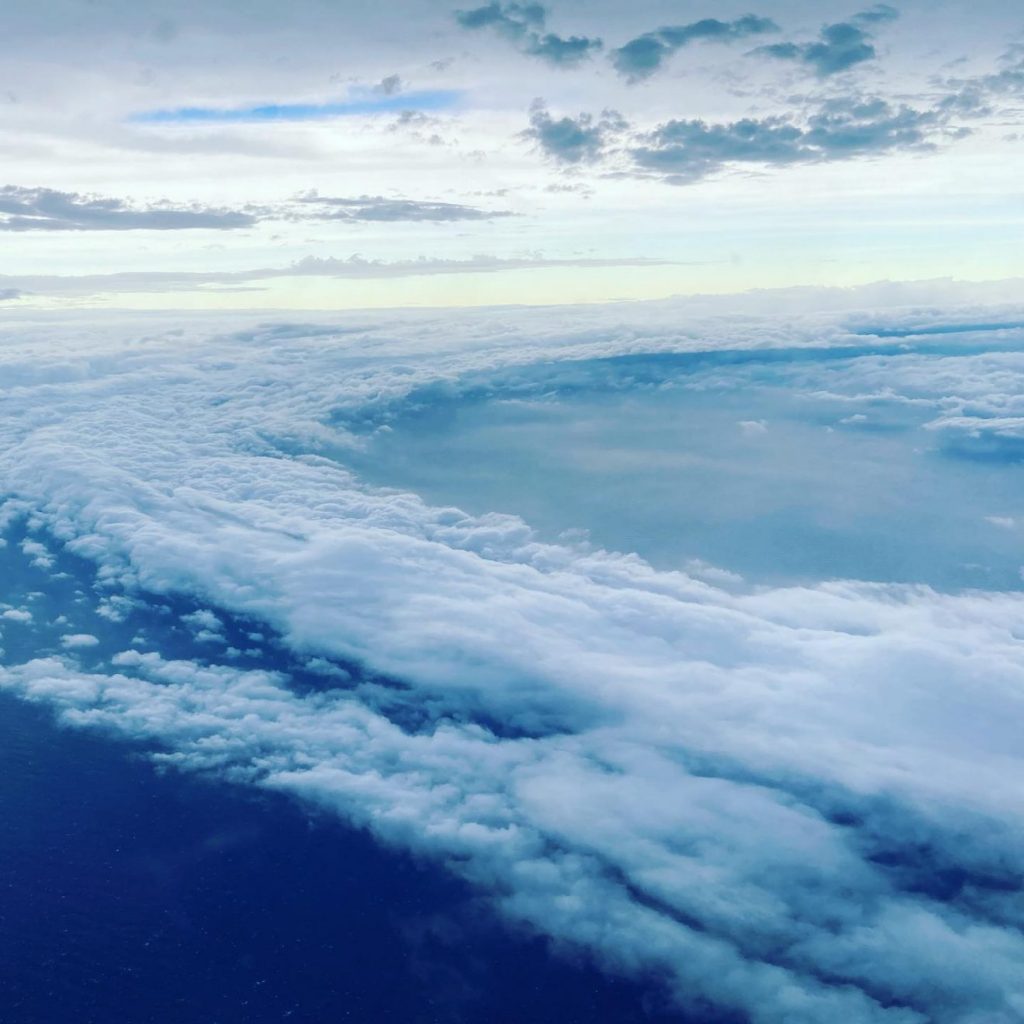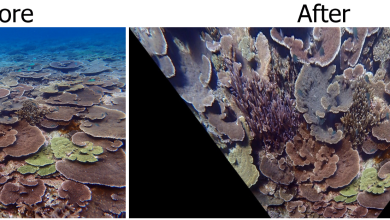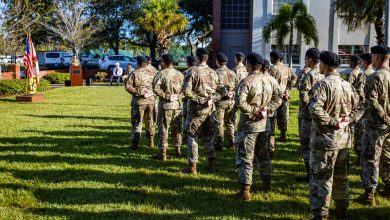Hurricane Hunter
Meteorology alumna builds a career chasing storms and dreams
Ashley Lundry ’06 was a student at Florida Tech during the Space Coast’s historic 2004 hurricane season—a uniquely intriguing experience for a meteorology major with a dream of becoming a hurricane hunter.
“My dad told me about the Navy Hurricane Hunters when I was young, and I thought it would be so cool to fly into a hurricane. It became my dream job to be a hurricane hunter; I just had no idea how I would get there,” Ashley says.
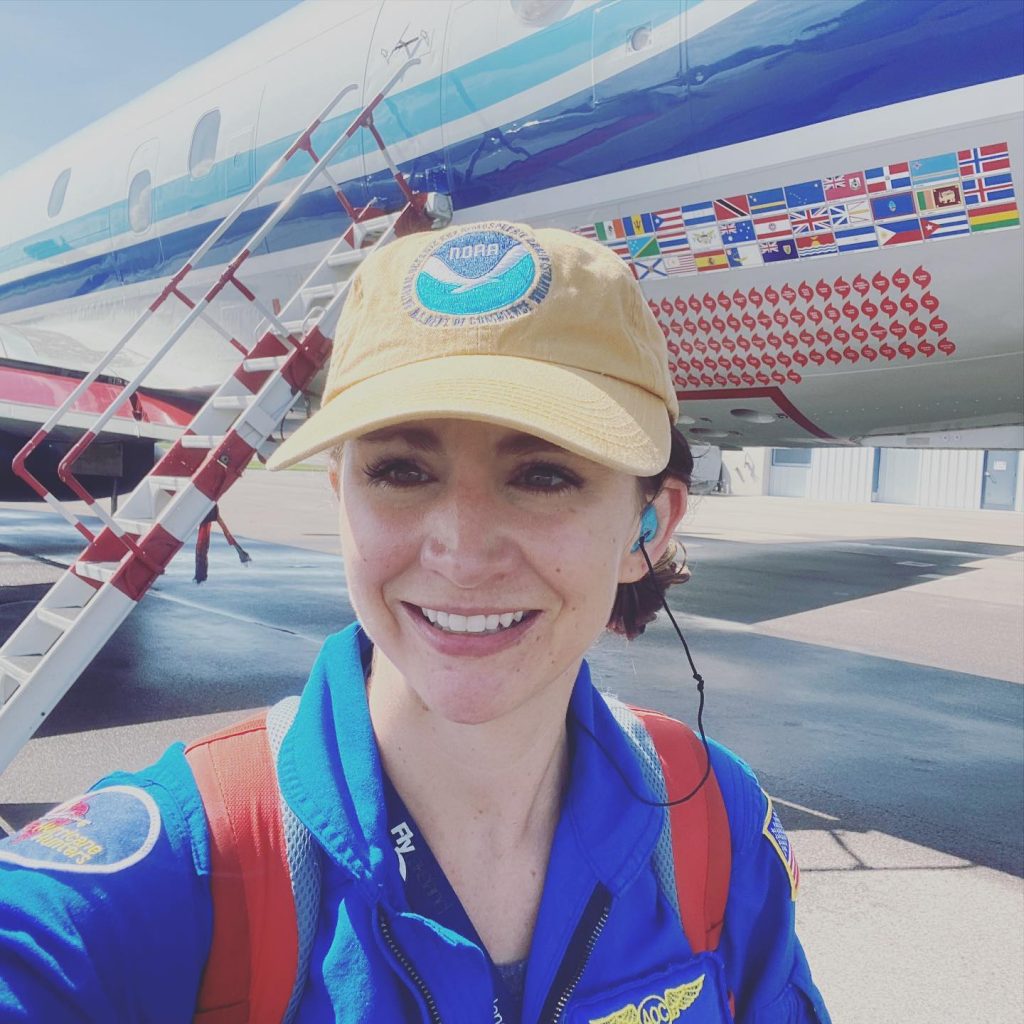
The Route to the Sky
Although Ashley started dreaming about flying into hurricanes at a young age, it took a lot of hard work and time for her to reach the skies.
“I wouldn’t be where I am right now if it weren’t for the combination of my meteorology degree and military experience,” she says.
After earning her degree on a 4-year Army ROTC scholarship at Florida Tech, Ashley joined the Army Reserves as a logistics officer. At the time, she was also working as a civilian broadcast meteorologist. A few years later, she transitioned to the Air Guard as a weather officer, a turning point in her career.
Ashley completed weather officer training at Keesler Air Force Base in Biloxi, Mississippi, which is also home to the 53rd Weather Reconnaissance Squadron, or Air Force Reserve Hurricane Hunters.
After touring the squadron with her class, Ashley met with the chief aerial reconnaissance weather officer (ARWO) to learn more about its mission. At that point, she realized that her dream of becoming a hurricane hunter could be much closer than she had imagined.
Once she had completed her weather officer training, Ashley became a graduate teaching assistant at Emporia State University while she earned her master’s degree in physical science.
Then, in 2014, after finishing up her graduate degree, she accepted an ARWO position with the Air Force Reserve Hurricane Hunters.
Achieving this dream job did not disappoint, and frankly, she couldn’t get enough. So in 2018, in addition to her Air Force Reserve Hurricane Hunter position, she became a flight director with the National Oceanic and Atmospheric Administration (NOAA) Hurricane Hunters.

In the Eye of the Storm
Each storm that Ashley has flown through has offered a unique experience, she says.
“Sometimes, it is smooth, while other times, it can feel like the turbulence will never end. It’s always incredible to see what the surface of the ocean looks like in stronger winds. Once you start getting strong tropical storm-force winds, the ocean’s surface looks like shattered glass.”
In August, Ashley directed six weather reconnaissance missions into Hurricane Laura, the last one only a few hours before the 150 mph storm made landfall on the coast of Louisiana.
“In a major hurricane with a well-defined eye, like Laura, it’s just incredible how, for one minute, you can be flying through the most intense winds and then break through into the eye with a calm ocean surface and an eyewall that looks like a stadium built out of clouds.”
And while many people are terrified just to imagine flying through such powerful storms, Ashley was never intimidated by them.
“I was never afraid to fly through a hurricane. I think for my first few flights, I was probably just really excited.”
Although Ashley has flown through too many storms to name, there are some that she will never forget, she says.
Hurricane Laura was memorable because she flew six missions into it, starting when the storm was still tropical depression 13, and finishing with a mission into the Category 4 hurricane just a few hours before its landfall.
Hurricanes Joaquin, Julio and Lorenzo were also significant to her career.
“I will always remember Hurricane Joaquin because it was my first hurricane flight without an instructor with the Air Force Reserve Hurricane Hunters. Hurricane Julio in the East Pacific was the first time I was on a mission when the Coast Guard called and asked us to help with a search and rescue. Similar to Hurricane Julio, while flying with NOAA, we were asked to help with a search and rescue mission near Hurricane Lorenzo.”

Hunting More Than Hurricanes
When people hear about hurricane hunters, they make a lot of assumptions—not all of them true.
“A lot of people I’ve talked to assumed we flew over the storm,” Ashley says.
But in fact, hurricane hunters with both the NOAA and the Air Force Reserve fly directly through the tropical cyclones. They also fly into and around other types of weather, winter storms, tropical depressions, atmospheric rivers—the list goes on.
And while the Air Force Reserve and NOAA hurricane hunters have similar missions, they often serve different purposes.
“One big difference between the two agencies is that NOAA also flies a lot of research missions,” Ashley says. “Aside from the research missions during the hurricane season, we also fly a variety of missions to include supercell/tornado research, air chemistry, missions to validate and calibrate weather satellite data and more.”
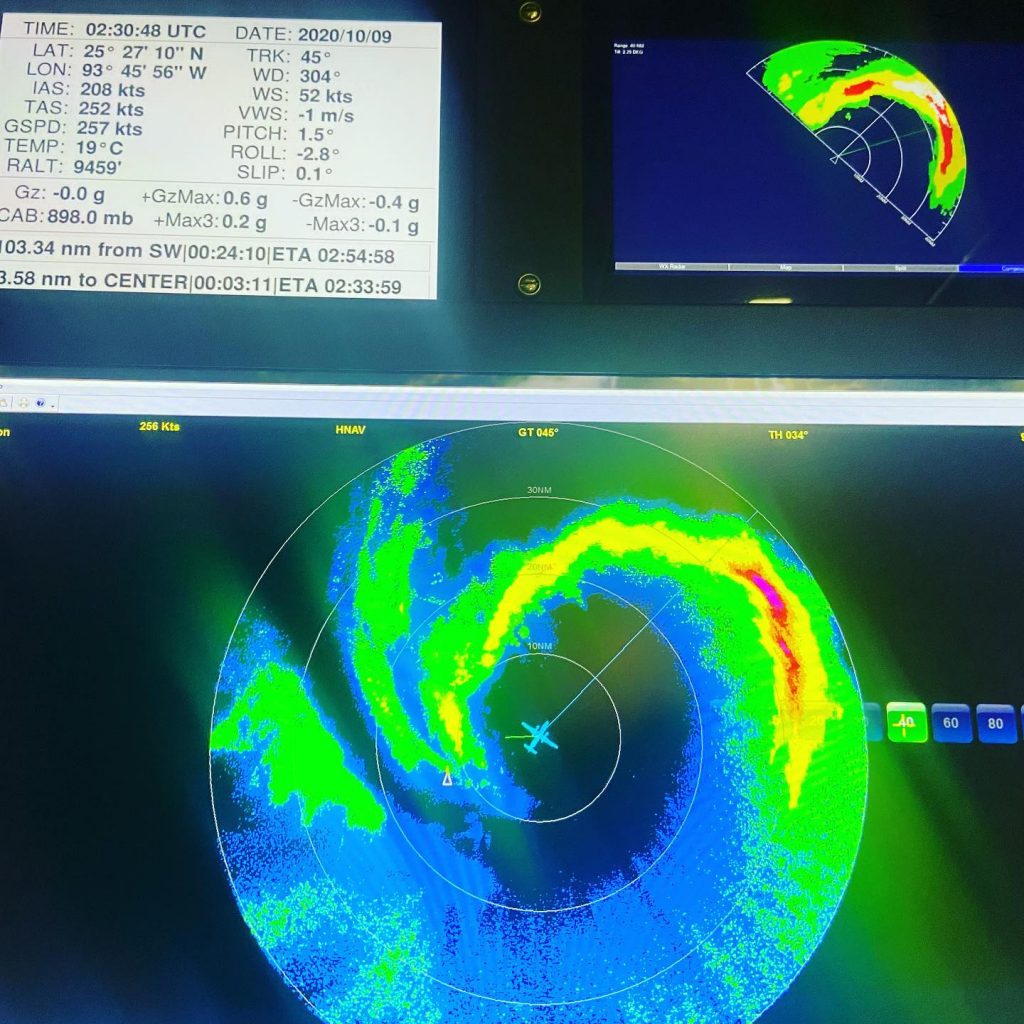
The Real Challenge
Despite responsibilities as important as protecting thousands of lives and risking her own life to confront hurricanes, for Ashley, the hardest part of the career is managing the balance between her family and work life.
“Balancing my military career and civilian career can be challenging, but in addition to that, I have a family that both of these careers take me away from. It can be challenging when I am on the road a lot or get back from a trip with my civilian job and have to immediately leave for military duty,” she says. “I am fortunate to have a supportive husband who takes care of our family when I am away, but I miss the good morning and goodnight hugs and kisses the most.”
Still, she does not take for granted the opportunity to do what she loves.
“The most rewarding part of my career is that I am doing what I always dreamed of doing. I also know that the data my crew is collecting becomes information that has an impact of saving lives and property,” she says. “Besides, I also get to travel to some pretty amazing places for work, and the sunrises and sunsets from the aircraft are incredible.”
“The most rewarding part of my career is that I am doing what I always dreamed of doing. I also know that the data my crew is collecting becomes information that has an impact of saving lives and property.”
Ashley Lundry ’06
The 2020 hurricane season marks her sixth season with the Air Force Reserve Hurricane Hunters and second season with the NOAA Hurricane Hunters—exactly where she wants to be in her career at this point, she says.
Her advice for students with similar aspirations?
“Don’t be afraid to take an opportunity that presents itself that wasn’t a part of that plan. It may be scary, but it also may lead somewhere amazing. Growing up, I dreamed about flying into hurricanes, and now I get to do that. It took a lot of years of hard work and taking opportunities that weren’t a part of my plan to end up where I am.”
